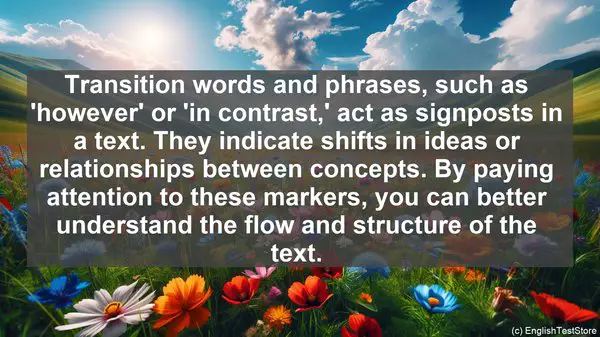Introduction: The Challenge of Complex Texts
As you prepare for the TOEFL exam, you’ll encounter a wide range of texts, from scientific articles to historical documents. These texts can be dense and challenging, but fear not! In this video, we’ll explore the top 10 methods that will make understanding complex texts a breeze.

1. Skimming and Scanning
When you first encounter a text, don’t dive into the details. Instead, skim through it to get a general idea of the content. Pay attention to headings, subheadings, and any bold or italicized text. Once you have an overview, use scanning to locate specific information quickly. This method saves time and helps you grasp the structure of the text.
2. Understanding Context
Context is your best friend when it comes to deciphering unfamiliar words or phrases. Often, the surrounding sentences or paragraphs provide clues about the meaning. Additionally, understanding the context of a text as a whole helps you connect ideas and comprehend the author’s main argument.
3. Breaking Down Sentences
Long, convoluted sentences can be intimidating. But by breaking them down into smaller chunks, you can unravel their meaning. Look for subject-verb-object structures and identify any modifiers or clauses. This step-by-step approach ensures you don’t miss any crucial information.
4. Annotating the Text
Don’t be afraid to mark up the text! Underline key points, circle important terms, and jot down any questions or observations. This active engagement with the text enhances your understanding and makes it easier to review later.
5. Predicting and Summarizing
Before delving into a section, take a moment to predict what it might be about based on headings or introductory sentences. This primes your brain and makes you more attentive while reading. After you’ve finished a section, summarize the main points in your own words. This not only reinforces your understanding but also aids in retention.
6. Familiarizing with Academic Vocabulary
Academic texts are often peppered with specialized vocabulary. Building a strong vocabulary repertoire is crucial. Make it a habit to learn new words regularly, and practice using them in context. This way, when you encounter them in a text, they won’t seem as daunting.
7. Noting Transition Words and Phrases
Transition words and phrases, such as ‘however’ or ‘in contrast,’ act as signposts in a text. They indicate shifts in ideas or relationships between concepts. By paying attention to these markers, you can better understand the flow and structure of the text.

8. Grasping Rhetorical Devices
Authors often employ rhetorical devices, such as analogies or metaphors, to convey their ideas effectively. Recognizing these devices not only adds depth to your understanding but also helps you see the text from the author’s perspective.
9. Making Inferences
Texts don’t always explicitly state everything. Sometimes, you need to read between the lines and make inferences based on the information provided. This critical thinking skill is invaluable in the TOEFL Reading section.
10. Practice, Practice, Practice!
Lastly, there’s no substitute for practice. The more you expose yourself to different types of texts, the more comfortable you’ll become in understanding them. Take advantage of TOEFL practice tests and resources to hone your skills.

